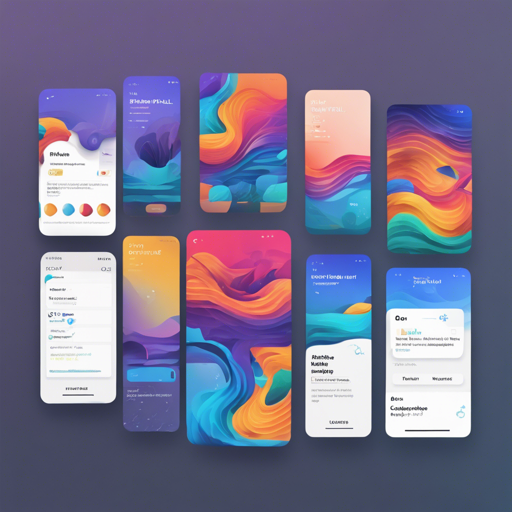The waterfall flow layout in Flutter enables you to create visually appealing grids where items are arranged based on the available vertical space in a column, much like how water flows in a waterfall—overflowing and spreading out in the available area. In this guide, we’ll walk you through how to implement the Waterfall Flow library in your Flutter applications in a user-friendly manner
Getting Started with Waterfall Flow
The first step in utilizing the Waterfall Flow library is to incorporate it into your Flutter project. Below is a step-by-step breakdown:
- Add the Library
In your project’s pubspec.yaml file, add the Waterfall Flow library under dependencies:
dependencies:
waterfall_flow: anyImport Waterfall Flow in your Dart file to start using its functionalities:
import 'package:waterfall_flow/waterfall_flow.dart';Understanding the Concepts
Before diving into the code, let’s use an analogy to understand how the Waterfall Flow layout works. Think of the layout as a painter’s palette, where each color is a widget. The painter knows how much space is available (the screen) and strategically places colors based on their size (the widgets’ dimensions). Just like the painter would fill in the spaces creatively, the Waterfall Flow widget organizes its child widgets in a neat and dynamic arrangement, thereby leveraging the available space efficiently.
Implementing Waterfall Flow
To build a simple Waterfall Flow layout, you can use the WaterfallFlow.builder method in conjunction with the SliverWaterfallFlowDelegateWithFixedCrossAxisCount. Here’s how you can achieve this:
WaterfallFlow.builder(
cacheExtent: 0.0,
padding: EdgeInsets.all(5.0),
gridDelegate: SliverWaterfallFlowDelegateWithFixedCrossAxisCount(
crossAxisCount: 2,
crossAxisSpacing: 5.0,
mainAxisSpacing: 5.0,
lastChildLayoutTypeBuilder: (index) => index == _list.length
? LastChildLayoutType.foot
: LastChildLayoutType.none,
),
);This code snippet sets up a basic layout with two columns, where items are spaced out nicely. The lastChildLayoutTypeBuilder function checks if the last child is reached to manage loading new items.
Garbage Collection in Waterfall Flow
Garbage collection is crucial in applications that deal with images or large datasets. By tracking the indexes of items that are no longer visible, you can reduce memory usage. This can be implemented as follows:
WaterfallFlow.builder(
gridDelegate: SliverWaterfallFlowDelegateWithFixedCrossAxisCount(
collectGarbage: (List garbages) {
garbages.forEach((index) {
final provider = ExtendedNetworkImageProvider(
_list[index].imageUrl,
);
provider.evict();
});
},
),
); Viewport Tracking
Waterfall Flow also allows you to track which widgets enter and leave the viewport. This is especially useful for optimization:
WaterfallFlow.builder(
gridDelegate: SliverWaterfallFlowDelegateWithFixedCrossAxisCount(
viewportBuilder: (int firstIndex, int lastIndex) {
print('viewport: [$firstIndex, $lastIndex]');
},
),
);Troubleshooting Tips
If you encounter challenges during implementation, here are some troubleshooting ideas:
- Item Overlapping: Ensure that the defined sizing parameters for your widgets are appropriate and that padding or spacing isn’t set to zero.
- Loading Performance: If loading times are sluggish, consider utilizing garbage collection to free up memory.
- Viewport Issues: When tracking viewports, validate that the indices printed match the expected behavior and adjust the pre-fetching accordingly.
For more insights, updates, or to collaborate on AI development projects, stay connected with fxis.ai.
Conclusion
Implementing a waterfall flow layout in Flutter doesn’t have to be daunting. With tools like the Waterfall Flow library, creating dynamic and responsive UI elements becomes a breeze. At fxis.ai, we believe that such advancements are crucial for the future of AI, as they enable more comprehensive and effective solutions. Our team is continually exploring new methodologies to push the envelope in artificial intelligence, ensuring that our clients benefit from the latest technological innovations.

